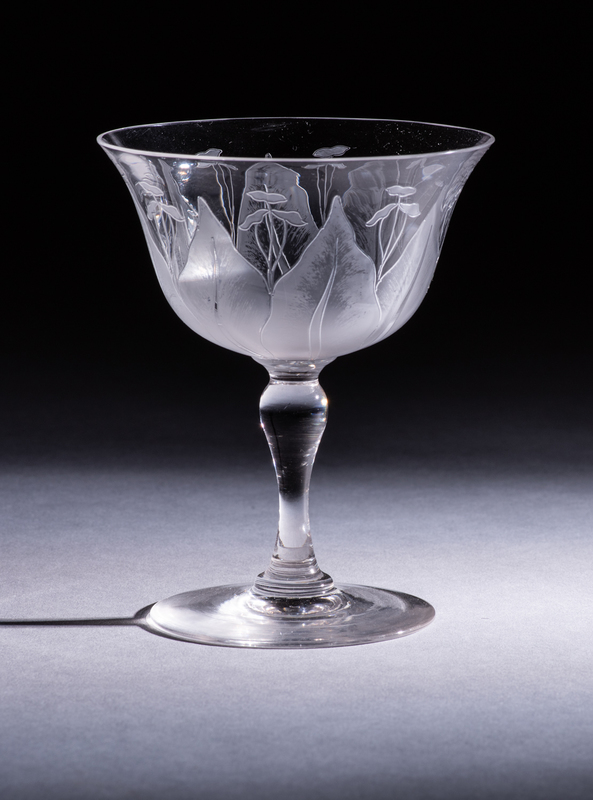Saucer Champagne Glass
Item
Title
Saucer Champagne Glass
Creator
C. Dorflinger & Sons
Date
1907-20 (ca.)
Dimensions
4 1/2 x 3 1/2 inches (d)
Medium
Lead glass
Object No.
2015.20.15
Credit line
Gift of Barbara Nitchie Fuldner
Description
While many of us today think of champagne exclusively being served in long, narrow glasses called "flutes," this is a relatively recent phenomenon that started to gain steam only in the mid-20th century. Although the flute's origins date back to the 18th century, one was far more likely to drink champagne from a "coupe" the shallow, wide form seen above and particularly favored by the French aristocracy. Despite persistent rumors of the shape's origin being modeled after the anatomy of famous women–Helen of Troy and Madame da Pompadour are often invoked–the truth is likely more mundane: George Ravenscroft's development of lead glass in the late 17th century made for heavier, more substantial glassware. Glass blowers used this new glass to modify and refine the shape existing forms (already in use for hard cider and ale) and thus the champagne coupe was born.
By 1915, when Stickley issued his catalog "The Craftsman Department of Interior Furnishings," the new styles he was promoting and the various items he was retailing signaled an abrupt change in direction for the firm. Responding to increasing financial pressures, Stickley sought to reach a broader audience and achieve solvency by embracing Colonial Revival furniture and more traditional ceramics while putting the Arts and Crafts aesthetic behind him. His decision to carry and promote Dorflinger's Kalana line of glassware is part of this larger rebranding effort that was both a possible path forward for the business to survive, but also a return to the aesthetic that first brought him to public attention.

